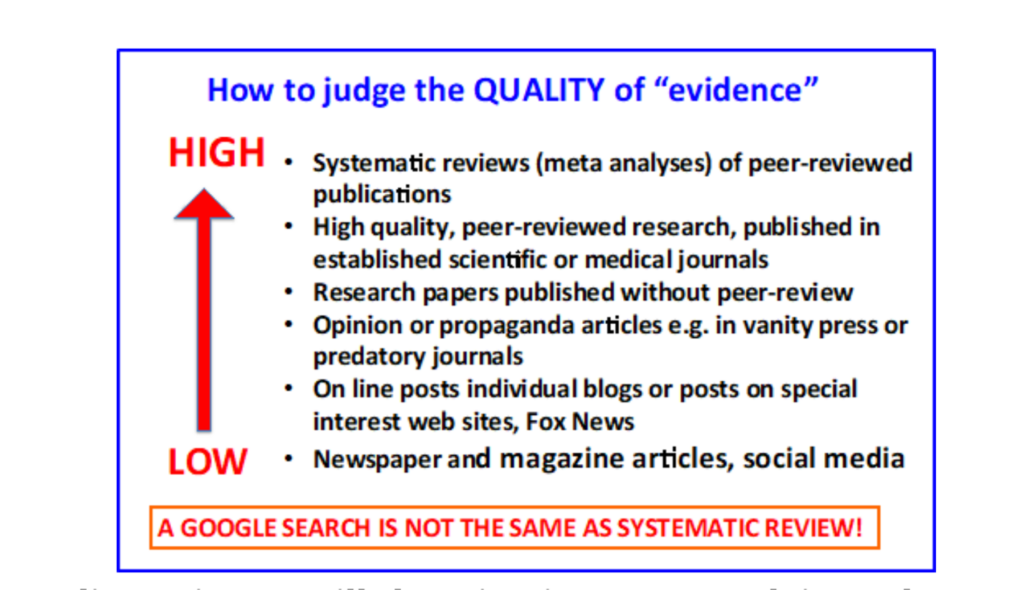Distinguishing Scientific Facts from Fake News in Audiology
From the Labs to the Clinics
Renowned auditory researcher Dr. Robert Harrison brings us up to date on information and research from the Labs. Appropriately titled “From the Labs to the Clinics”, Bob is involved in laboratory and applied/clinical research, including evoked potential and otoacoustic emission studies and behavioural studies of speech and language development in children with cochlear implants. For a little insight into Bob’s interests outside the lab and the clinic, we invite you to climb aboard Bob’s Garden Railway.
In this era of fake news and conspiracy theories, finding the truth is more difficult. Scientific facts are being dismissed as fabricated, and whacko therapies for illness are touted as true cures. These problems with “alternative truths” have always been with us; the snake-oil salesmen of old have made their profits. However, in the past few decades we have seen an epidemic of distrust of science, and also of serious journalism and many cherished institutions (e.g. the US Center for Disease Control). It is probably not appropriate here to launch into how these factors are enabled by ambitious politicians and amplified by social media platforms, so I will stick with the field of Audiology. Yes, we have some fake news issues.
Did you know that (green energy) wind turbine noise causes hearing loss, tinnitus, birth defects and even cancer? Well, these ideas have been spread and embraced by a multitude of individuals who, for various reasons, don’t like wind turbines. People look for any reason to stop wind turbine energy production, from NIMBY individuals to those with interests in oil and gas industries. I have been involved in many activities to introduce scientific facts into arguments and disputes about the health-effects of wind turbine noise, including as co-author on a Health Canada sponsored review of scientific evidence.1,2 I have also been called upon to give lectures to reassure residents local to potential wind farms that they are not going to fall ill. When I talk to the lay public and present scientific facts, I have often been referred to Google search posts that state “alterative facts.” These opinions or fabrications are presented by wind turbine antagonists as equivalent to serious meta-analyses of data or peer reviewed scientific publications.
Even within the academic world, there are some who are not able or willing to distinguish between scientific evidence and “made up stuff”. One reason for this has been the emergence of predatory journals and the vanity press. Nowadays It is possible to publish shoddy research, false claims, and unsubstantiated opinions and make them look official with a journal reference or DOI number. Even if we only consult legitimate scientific publications, there is a range of “levels of evidence” that can guide us to find the most reliable facts. I have written a previous post in the Canadian Audiologist on this3 and reproduce the figure here showing the hierarchy of sources of evidence.

Back to audiology. As with many other areas of healthcare, there are times when it is important to seek out and use reliable scientific facts and evidence. This is particularly important when an audiology practice involves the recommendation of hearing prostheses. It is not uncommon for hearing aid or cochlear implant companies to describe the advantages of their product because of a new or unique feature. Sometimes solid research data supports the claim, and in that case there will be references to published research. Sometimes there will be no clear clinical trial, but maybe some closely research that is relevant. Sometimes there will be no evidence. As a healthcare professional, I think it is important for you to be clear about the facts when you share your expertise with patients. That might mean doing some homework.
I am certain that for most readers of this column, I do not need to guide how to find real evidence for audiology issues. However, just in case, please look at the table in the figure and remind yourself about the levels of evidence that exist – from level A–a systematic analysis of peer-reviewed publications, down to lower levels where statistical significance of the results may not be strong, down to non-researched opinions and frank misinformation. To have the most confidence in the evidence, look for published data in high impact journals. There are many in the field of audiology, for example: Hearing Research, Ear and Hearing, Audiology and Neuro-Otology, the Journal of the Association for Research in Otolaryngology (JARO), the International Journal of Audiology. There are many more but check that the journal is listed on Medline (PubMed) and thus has a robust peer review process.
To conclude, I will repeat the first line of this column: “In this era of fake news and conspiracy theories, it is more and more difficult to find the truth.”
References
- Understanding the Evidence: Wind Turbine Noise. The Expert Panel on Wind Turbine Noise and Human Health” 2015 (ISBN 978-1-926522-07-4). Available at: https://cca-reports.ca/reports/understanding-the-evidence-wind-turbine-noise/
- Harrison RV (2020): Wind Turbine noise is not damaging to health. Canadian Audiologist Vol 7(2). Available at: https://canadianaudiologist.ca/issue/volume-7-issue-2-2020/column/from-the-labs/
- Harrison RV (2022): To seek out the facts a Google search may not be enough. Canadian Audiologist Vol 9(1). Available at: https://canadianaudiologist.ca/issue/volume-9-issue-1-2022/column/from-the-labs/

